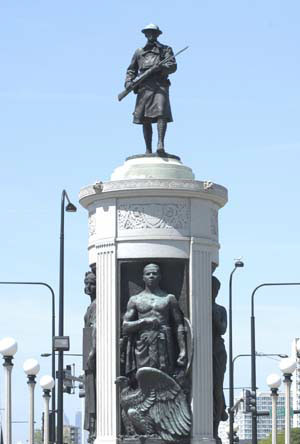Louis Outlaw grew up on stories of Bronzeville, a legendary South Side community that over the years attained a sort of mythic status in his mind. His family had come to Chicago during the 1940s, a part of the Great Migration that brought African Americans north in search of jobs and a friendlier social climate. The family settled at 46th and Indiana in what was then a booming neighborhood.
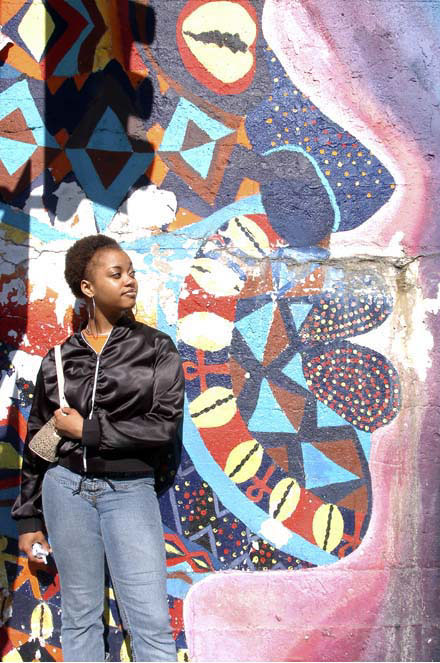 The borders of Bronzeville are debatable. The nucleus of the historic area is bounded roughly by 31st, 39th, State and the lake, though some carry the boundaries as far south as 51st, including the neighborhoods of Grand Boulevard, Douglas and North Kenwood-Oakland. Bronzeville allegedly got its name from an editor of the Chicago Bee newspaper. Back then, it was the home of the lush boulevard now known as King Drive, august greystones and homegrown businesses. Celebrities from Duke Ellington and Louis Armstrong to Richard Wright and Ida B. Wells once called Bronzeville home. The giants of jazz and blues played in myriad clubs along 47th Street, which in its heyday was one of the greatest entertainment strips in the country.
The borders of Bronzeville are debatable. The nucleus of the historic area is bounded roughly by 31st, 39th, State and the lake, though some carry the boundaries as far south as 51st, including the neighborhoods of Grand Boulevard, Douglas and North Kenwood-Oakland. Bronzeville allegedly got its name from an editor of the Chicago Bee newspaper. Back then, it was the home of the lush boulevard now known as King Drive, august greystones and homegrown businesses. Celebrities from Duke Ellington and Louis Armstrong to Richard Wright and Ida B. Wells once called Bronzeville home. The giants of jazz and blues played in myriad clubs along 47th Street, which in its heyday was one of the greatest entertainment strips in the country.
Outlaw’s family moved from the South Side when he was young and his memories of the area were vague, but he remained fascinated by the historic community, its beautiful buildings and lush parks, its prominent role in African American history and culture.
As a commander with the Chicago Fire Department years later, Outlaw returned to Bronzeville as firefighters battled frequent blazes in the abandoned buildings that dotted its streets.
“Regrettably, I saw a lot of these kinds of buildings go up in flame, many of them destroyed by people scavenging them,” Outlaw says. “If a building had a fire and there was not proper security, people could go in and wreak havoc, take the oak trim and anything else of value.”
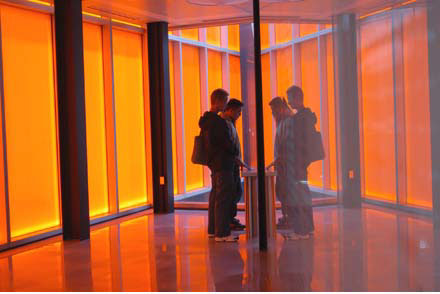 Bronzeville and surrounding neighborhoods, like much of the South Side, had deteriorated dramatically since the days when Outlaw’s family moved there. Many properties became rundown during the ’50s and ’60s and growing numbers of middle class African Americans left the neighborhood as their options were expanded by fair housing laws and the changing racial composition of other city neighborhoods and suburbs.
Bronzeville and surrounding neighborhoods, like much of the South Side, had deteriorated dramatically since the days when Outlaw’s family moved there. Many properties became rundown during the ’50s and ’60s and growing numbers of middle class African Americans left the neighborhood as their options were expanded by fair housing laws and the changing racial composition of other city neighborhoods and suburbs.
The city’s attempt at improvement was to trade “blighted” blocks for vast tracts of public housing – including Stateway Gardens and the Robert Taylor Homes – which concentrated the poor in crowded highrises walled off by the Dan Ryan Expressway.
Outlaw was disheartened by what he saw but that didn’t diminish his interest in the South Side or in the magnificent buildings gutted by fires and vandals. In 1991 he bought an abandoned building in Grand Boulevard and later, a second property, both more than 115 years old. The first, which had been abandoned for six years, required extensive investment and a gut rehab.
Today, the historic building has been lovingly restored, and the surrounding neighborhood has undergone a similar transformation. The public housing highrises are falling, to be replaced by thousands of new homes; apartments are being converted to condominiums; and old buildings are being rehabbed.
Dramatic changes in Bronzeville are being fed by gentrified neighborhoods to the north and south, improvements in safety and public infrastructure and strong institutional anchors – universities and hospitals that stuck with the area even when it fell on hard times. Perhaps most important, land prices, though rising, are comparatively affordable for a lakefront location that on a good day, is a ten-minute drive from downtown Chicago.
In North Kenwood-Oakland, bounded roughly by 35th, 47th, Cottage Grove and the lake, blocks that looked like they’d been carpet-bombed 10 years ago are now lined with new single-family homes, some priced at more than half a million dollars. On block after block in Bronzeville, abandoned architectural gems are being restored and converted to condominiums. Many of these condos sit in what a few years ago were considered the neighborhood’s most dangerous pockets, and though some streets are still edgy, developers are selling well-priced homes as quickly as they can build them.
And that’s just for starters.
Developer Draper & Kramer, which built major housing developments on the south lakefront during a period of disinvestment, is building 490 units of market-rate and affordable housing at Lake Park Crescent, on the former site of Chicago Housing Authority projects at 41st and Lake Park. Directly west, the Thrush Companies is building 137 units at Jazz on the Boulevard, on a vacant 4.5-acre parcel that runs along Drexel between 41st and 42nd. Alex Loyfman, a property manager for AMA Realty Group of Illinois, says investors plan to turn the famous Michigan Garden Apartments, known locally as the Rosenwald, from a boarded-up hulk at 47th and Michigan into a condo building of more than 300 units that recaptures the complex’s original glory.
 The project currently creating the most buzz in the area is probably Park Boulevard, the 37-acre development of more than 1,300 homes that’s replacing the CHA’s Stateway Gardens public housing complex. The development’s main 34-acre site will fill the giant hole left by Stateway, from 35th to Pershing between State Street and the Metra tracks, with 880 homes. An additional 436 homes will be located nearby, along Pershing between State and Indiana. Prices start in the $120s, and seven architectural firms were involved in designing the six available home styles, which will be on the market by early fall.
The project currently creating the most buzz in the area is probably Park Boulevard, the 37-acre development of more than 1,300 homes that’s replacing the CHA’s Stateway Gardens public housing complex. The development’s main 34-acre site will fill the giant hole left by Stateway, from 35th to Pershing between State Street and the Metra tracks, with 880 homes. An additional 436 homes will be located nearby, along Pershing between State and Indiana. Prices start in the $120s, and seven architectural firms were involved in designing the six available home styles, which will be on the market by early fall.
Tearing down Chicago Housing Authority projects and reconfiguring public housing in mixed-income communities is the cornerstone of redevelopment efforts on the South Side. Highrises at Stateway Gardens and the Robert Taylor Homes as well as smaller CHA buildings in the area steadily have been torn down. Many of the major new developments are being built at least partly on the site of these former CHA projects and include “affordable” and public housing replacement units as well as market-rate homes.
At Park Boulevard, the housing mix is about one-third market-rate, one-third affordable (within reach for buyers earning less than 120 percent of the area’s median income) and one-third CHA replacement units – a now common formula.
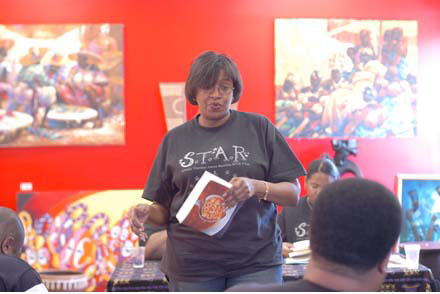 James Miller is CEO of Stateway Associates, LLC, the developer for Park Boulevard, a team that includes Kimball Hill Homes, Walsh Construction, Neighborhood Rejuvenation Partners and Mesa Development. He says that the start of Park Boulevard and the end of the Dan Ryan’s curtain of public housing are immense catalysts for the area.
James Miller is CEO of Stateway Associates, LLC, the developer for Park Boulevard, a team that includes Kimball Hill Homes, Walsh Construction, Neighborhood Rejuvenation Partners and Mesa Development. He says that the start of Park Boulevard and the end of the Dan Ryan’s curtain of public housing are immense catalysts for the area.
“That’s what has everyone so excited: here you are in the middle of a city near major institutions and transportation, and it’s 34 acres,” Miller says. “We’re integrating an area that had been isolated from the larger community for decades and reintroducing the street grid. It represents a transformation of the South Side. The city is moving South.”
Miller says Stateway Associates hopes to break ground in the fall. At Draper and Kramer’s Lake Park Crescent, a first phase of 148 rental apartments – sixty of them public housing – will begin delivering units in June. The for-sale homes, which will begin marketing in mid- to late summer, include a first phase of 130 condos and 13 rowhouses, half of them market-rate.
Brian Moore, asset manager for Draper and Kramer, says the development is having a strong impact on the area because of its scale and quality as well as because of the way people at various income levels are integrated.
“Now that it’s beginning to take shape, (Lake Park Crescent) will be a great boost to the neighborhood,” Moore says. “The quality of the homes we’re building will be a boost and for people who have been concerned in the past about public housing coming back, we want to allay those concerns.”
Moore says Draper and Kramer has maintained high standards for leasing and designed the development so that the public housing units will be indistinguishable from the market-rate homes. The project sits on a premier site at 41st and Lake Park and has been planned with a three-acre crescent-shaped park as well as a bridge that will provide direct access to the lake.
Jazz on the Boulevard, developed by the Thrush Companies and partners Granite Development and Century Place Development Corporation, uses a similar mixed-income formula. Developer David Chase, of Thrush, says that developments like Jazz reflect the economic diversity of the city, and no longer faze most buyers, who are attracted to quality finishes in a location that’s blocks from the lake but much more affordable than the north lakefront. Many of the brand new units at Jazz on the Boulevard have prices starting under $200,000.
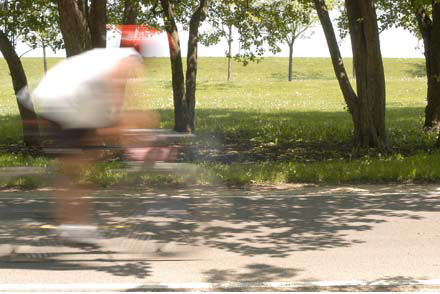 “This is for new construction of comparable quality (to North Side developments), and you’re a couple of blocks from the lake,” Chase says. “Nearby you have Hyde Park and great retail, public transportation is readily available, and presently there’s very low density, but it’s an area where prices are accelerating rapidly.”
“This is for new construction of comparable quality (to North Side developments), and you’re a couple of blocks from the lake,” Chase says. “Nearby you have Hyde Park and great retail, public transportation is readily available, and presently there’s very low density, but it’s an area where prices are accelerating rapidly.”
The same sort of income mix has worked with varying degrees of success on the North Side at projects like North Town Village, which integrated CHA replacement, affordable and market-rate units on the edge of Cabrini-Green. That project had the advantage of sitting on the edge of the Gold Coast and some of the most precious real estate in the country during a real estate boom. The major new South Side developments will test how well a similar formula works south of Cermak in a market that while still healthy is softer than it was a few years ago.
Residents of the mid-South have mixed feelings both about the potential for displacement as property values rise, and about the CHA units being scattered in the community.
“I was at a block association meeting…and it was interesting to talk to people who grew up in the neighborhood,” says Karen DeGrasse, who came to Bronzeville with her husband and two children several years ago. “They were concerned about their taxes going up with all the new construction. That’s a real side of it. It was also interesting to hear these people, who – some of them grew up in projects – how they felt about scattered-site housing. Pretty much, people are ok as long as residents take care of where they live. Clean, safe housing is important to anyone.”
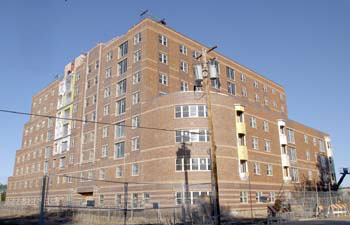 CHA residents are perhaps the most concerned of all. Though many of the highrises being torn down had significant vacancy rates, the new housing does not offer one-for-one replacement and it’s generally not built until long after the towers are demolished. Meanwhile CHA residents must shift to other projects or try their luck with private landlords using Section 8 vouchers. Pledges from the housing authority that everyone who abides by his lease will be entitled to return to a new or rehabbed unit are viewed warily.
CHA residents are perhaps the most concerned of all. Though many of the highrises being torn down had significant vacancy rates, the new housing does not offer one-for-one replacement and it’s generally not built until long after the towers are demolished. Meanwhile CHA residents must shift to other projects or try their luck with private landlords using Section 8 vouchers. Pledges from the housing authority that everyone who abides by his lease will be entitled to return to a new or rehabbed unit are viewed warily.
While some CHA residents worry about being moved out of the area, new residents are migrating to the South Side from all over the city and suburbs.
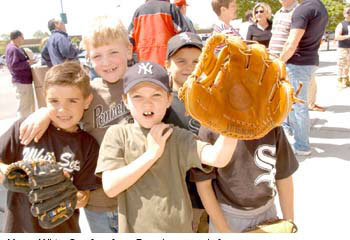 “Our South Side stuff is doing a lot better than our North Side stuff,” says Geraldo Roman, of Roman Realty Group, which is developing and marketing numerous condo buildings in the area. “Developers are finding big interest in this market because of what they can buy these buildings for and what their return is. The return is marginal on the North Side.”
“Our South Side stuff is doing a lot better than our North Side stuff,” says Geraldo Roman, of Roman Realty Group, which is developing and marketing numerous condo buildings in the area. “Developers are finding big interest in this market because of what they can buy these buildings for and what their return is. The return is marginal on the North Side.”
That attitude on the part of builders and brokers represents a major shift after decades in which the city’s largest developers ignored the South Side.
What changed?
Rising commute times, an improved cityscape and a stellar economy fed a citywide real estate boom during the ’90s, as Chicago saw its first population gain since World War II. Lakefront land costs north of Cermak soared to new heights while large tracts of land lay undeveloped to the south. Not only was land cheap and available, it also sat among some of the city’s best beaches, parks and grassy boulevards, lined with beautiful greystones and Victorian mansions that had grown dilapidated.
Some parts of Bronzeville had been so devastated by drugs and gang activity, that the city bought up much of the real estate, its fate guided by a local Conservation Community Council. A Parade of Homes sponsored by the city during the mid-’90s in North Kenwood-Oakland brought new exposure to the area and was another important catalyst for development.
Many couples and singles who want to stay in the city as they move up the housing ladder – an increasingly common phenomenon in Chicago – find that short of winning the lottery, they can’t afford much more than a cramped one-bedroom condo downtown or on the North Side.
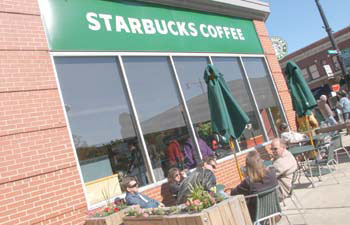 “I had lived on the North Side for seven years before moving down here,” says DeGrasse. “I was renting, and I wanted to live north, but for $200,000 you could only get something that needed to be torn down.”
“I had lived on the North Side for seven years before moving down here,” says DeGrasse. “I was renting, and I wanted to live north, but for $200,000 you could only get something that needed to be torn down.”
At 41st and King, however, DeGrasse and her husband found a rehabbed three-bedroom condo with two baths, hardwood floors and 2,000 square feet of space priced in the $150s. Of course, that was then. Today, Bronzeville prices are still affordable compared to the North Side, but they’ve been rising steadily.
One-bedroom condos with 1.5 baths at Morhyne Development Company’s St. Lawrence on the Park project, 5050 S. St. Lawrence, start in the $190s. Two-bedrooms with two baths start in the $290s, and a four-bedroom with four baths is priced from the $420s. The units have the sorts of high-end finishes – oak floors in living areas, recessed lighting, granite counters – that are common in North Side developments but were hard to find in Bronzeville 10 years ago.
“I live in the neighborhood too, so I’m watching it all, and it feels good to see things improving, property values inching up,” DeGrasse says.
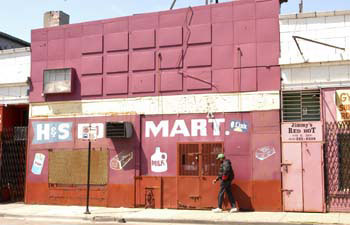 Residents of neighborhoods farther north, especially the South Loop and West Loop, have been prime buyers of new Bronzeville homes. After pioneering those “new” neighborhoods, carved from former railroad land, warehouses, junkyards and flophouses on the edge of downtown, they’ve built up significant equity. Now they want to cash out and find more space in a traditional neighborhood.
Residents of neighborhoods farther north, especially the South Loop and West Loop, have been prime buyers of new Bronzeville homes. After pioneering those “new” neighborhoods, carved from former railroad land, warehouses, junkyards and flophouses on the edge of downtown, they’ve built up significant equity. Now they want to cash out and find more space in a traditional neighborhood.
Because the South Loop has pushed as far as Cermak (2200 S.), Bronzeville would seem an obvious choice for its residents, many of whom move up and out after getting married or having a first child. A couple of miles south and they’re in quieter, more affordable streets but still close to the Loop.
There is, however, in the words of Karen DeGrasse, a certain “South Side stigma” that needs to be overcome with some buyers, whose only knowledge of the South Side comes from the old view of public housing highrises stacked along the Dan Ryan Expressway. But residents of the South Loop, one of the city’s few racially integrated, middle-class neighborhoods, are more apt to approach the area with an open mind.
Bill McConnel and his wife, Lisa, moved from the South Loop into a home at Berkeley Pointe, by developer Jerome Wade, several years ago with their son, Cody, the main reason the couple traded their South Loop townhouse for a North Kenwood single-family.
“I like this area better, and where it’s heading,” Lisa says. “We were right on Clark, and it’s not as residential. Here I don’t mind Cody going out and playing on the block.”
“A kid can run around without you having to worry about traffic,” Bill adds.
As an interracial couple – Bill is white and Lisa is African American – they say they’ve been comfortable in North Kenwood. “Most people in the neighborhood have been very welcoming,” says Bill, who works in insurance sales and does much of his job from home.
“What I’m wondering about is restaurants and commercial and what’s coming on 43rd,” Lisa says. It’s perhaps the biggest complaint of new homeowners in the area. Ironically, it also was the biggest complaint for many of them in the South Loop, which only recently has seen an influx of grocery stores, restaurants, coffee shops and other amenities. Commercial strips from 35th to 47th streets remain mostly shabby, with high vacancies and boarded-up storefronts or low-grade commercial tenants, such as fast food restaurants and dollar stores.
Hyde Park, which now has a Borders Books & Music, Starbucks and a variety of good shops and restaurants, is the closest and best option for many mid-South consumers. In the other direction, there’s Chinatown and the South Loop. In between there’s a shocking lack of enterprise. A city committee is devoted to bringing commercial development to the blocks between Roosevelt and 47th. Commercial always lags behind residential development, but the influx of new residential construction and the redevelopment of public housing should make the neighborhood more attractive to retailers.
And that can only add value to the historic Bronzeville buildings Louis Outlaw bought in the early ’90s. Not that he’s worried.
“This was a fabulous investment,” Outlaw says. “There’s a great dynamic here, as there is throughout the city – a lot of restoration work, new construction and the city spending a lot of money. I remember when we had these highrises over there, 10 or 12 years ago, that were dominated by gangs. Now, there’s a great effort to restore neighborhoods.”

